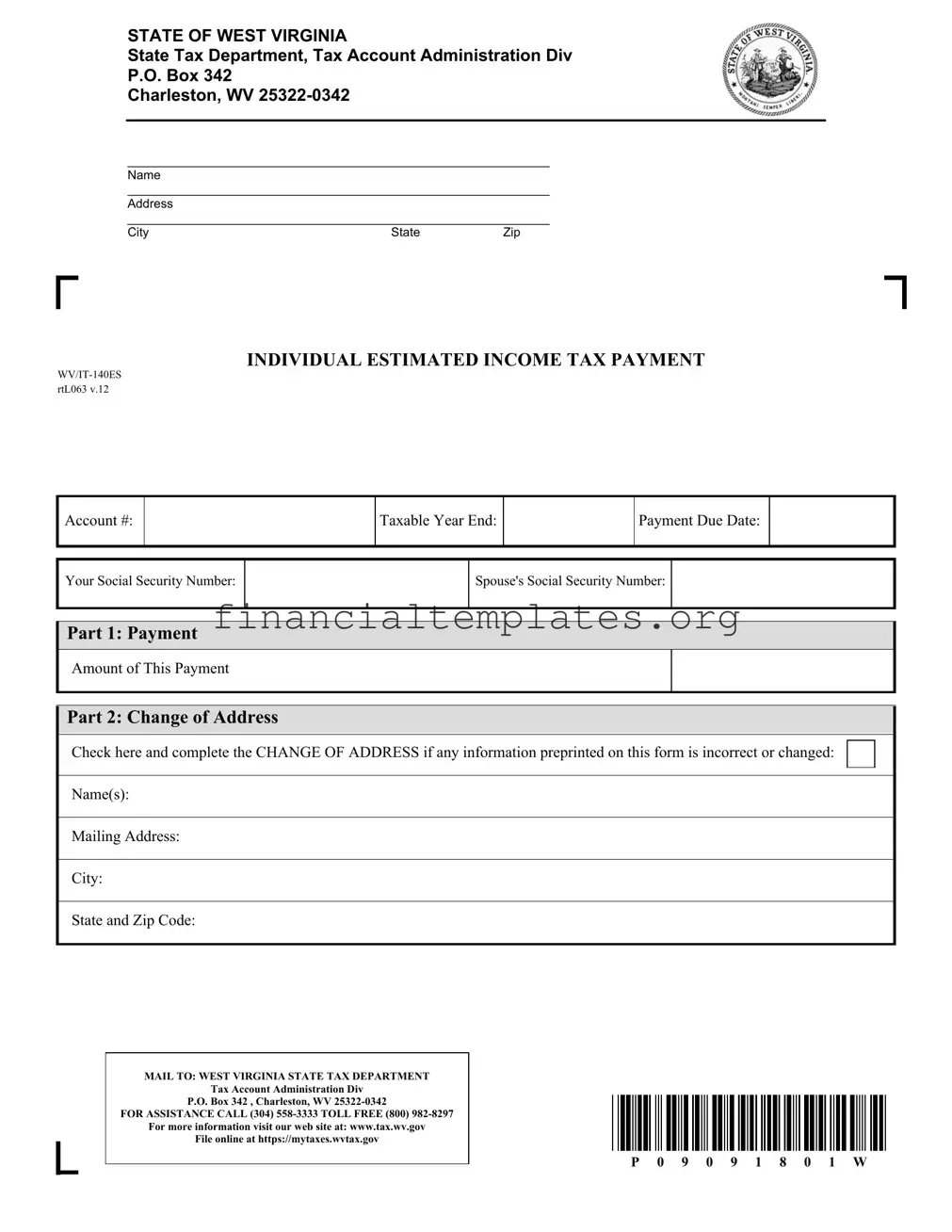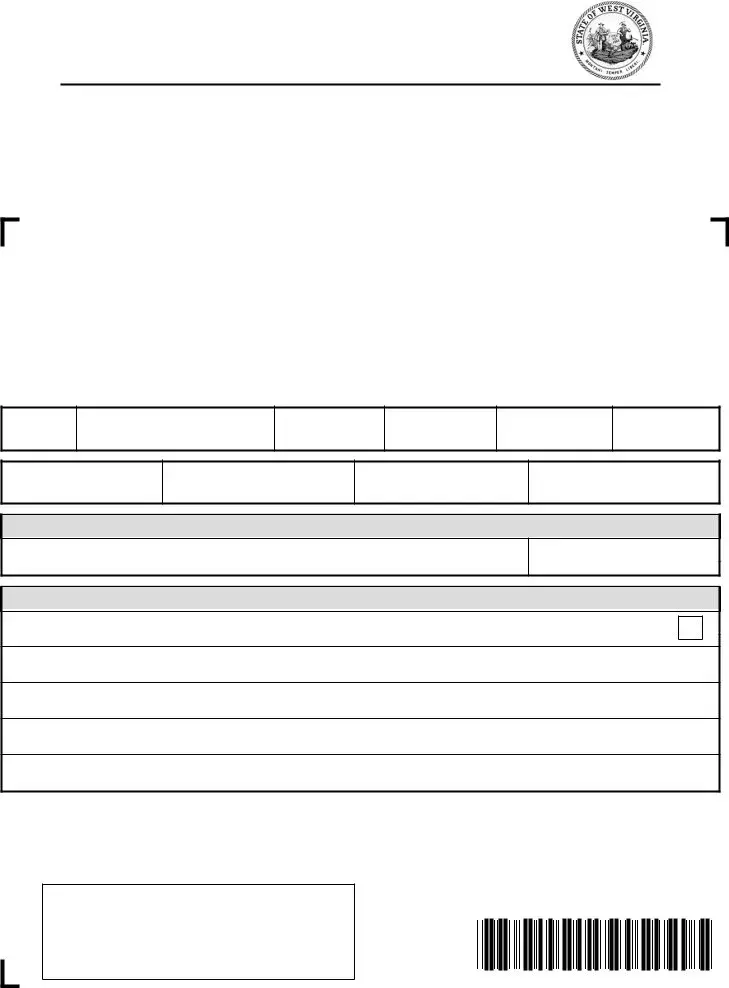STATE OF WEST VIRGINIA
State Tax Department, Tax Account Administration Div
P.O. Box 342
Charleston, WV 25322-0342
_____________________________________________________________ |
Letter Id: |
L0045367296 |
DONNA J. AAROE |
|
|
Name |
|
|
|
|
17 CLUB HOUSE DR |
|
|
Issued: |
02/01/2019 |
_____________________________________________________________ |
EVANS WV 25241-9402 |
|
|
Account #: |
2094-9145 |
Address |
|
|
|
|
_____________________________________________________________ |
Period: |
12/31/2018 |
City |
State |
Zip |
INDIVIDUAL ESTIMATED INCOME TAX PAYMENT
WV/IT-140ES rtL063 v.12
Your Social Security Number:
Spouse's Social Security Number:
Part 1: Payment
Amount of This Payment
Part 2: Change of Address
Check here and complete the CHANGE OF ADDRESS if any information preprinted on this form is incorrect or changed:
Name(s):
Mailing Address:
City:
State and Zip Code:
MAIL TO: WEST VIRGINIA STATE TAX DEPARTMENT
Tax Account Administration Div
P.O. Box 342 , Charleston, WV 25322-0342
FOR ASSISTANCE CALL (304) 558-3333 TOLL FREE (800) 982-8297
For more information visit our web site at: www.tax.wv.gov
File online at https://mytaxes.wvtax.gov
P 0 9 0 9 1 8 0 1 W
INSTRUCTIONS FOR MAKING ESTIMATED PAYMENTS
If you expect to owe at least $600 in State tax when you file your annual income tax return, you are required to make estimated tax payments using this form.
Determine your estimated tax using the instruction brochure (Form IT-140ESI) avaliable at www.tax.wv.gov
Write the amount of your payment on this form. You must pay at least the minimum amount calculated using the instructions to avoid being penalized; however, you may pay more than the minimum if you wish.
Be sure to post your payment in the payment table. If you are not a calendar year taxpayer, you should see the instructions to determine the due dates of your payments.
Estimated tax payments should be mailed by the due date to:
State Tax Department
Tax Account Administration Division - EST P.O. Box 342
Charleston WV 25322-0342

